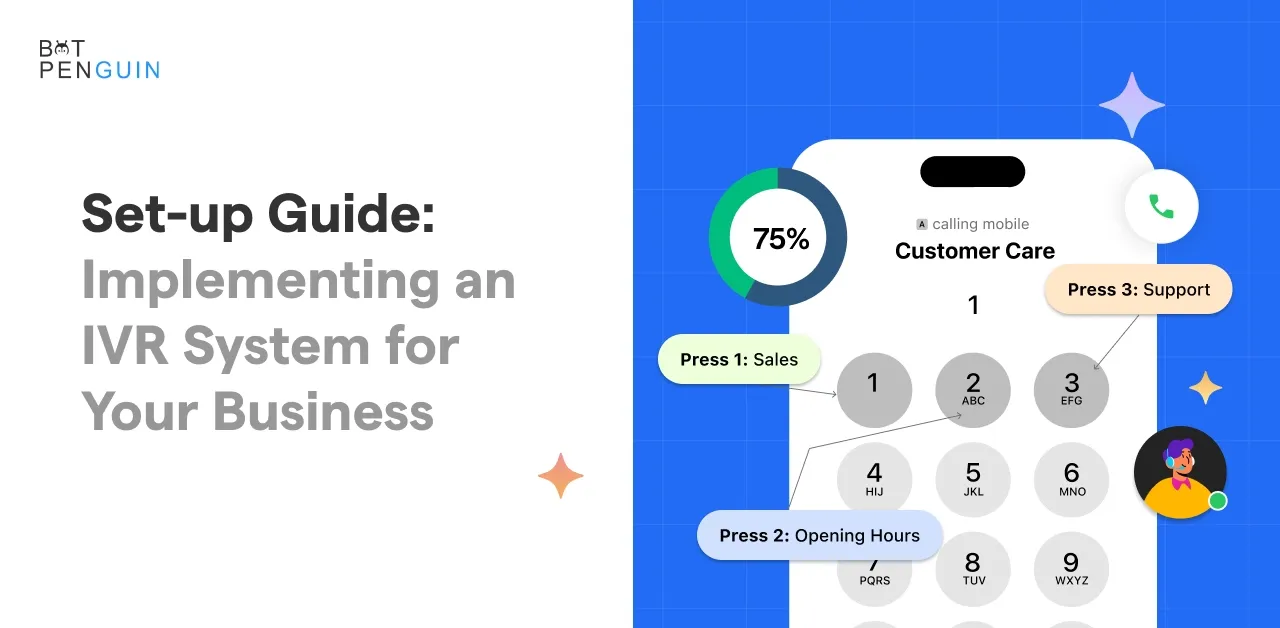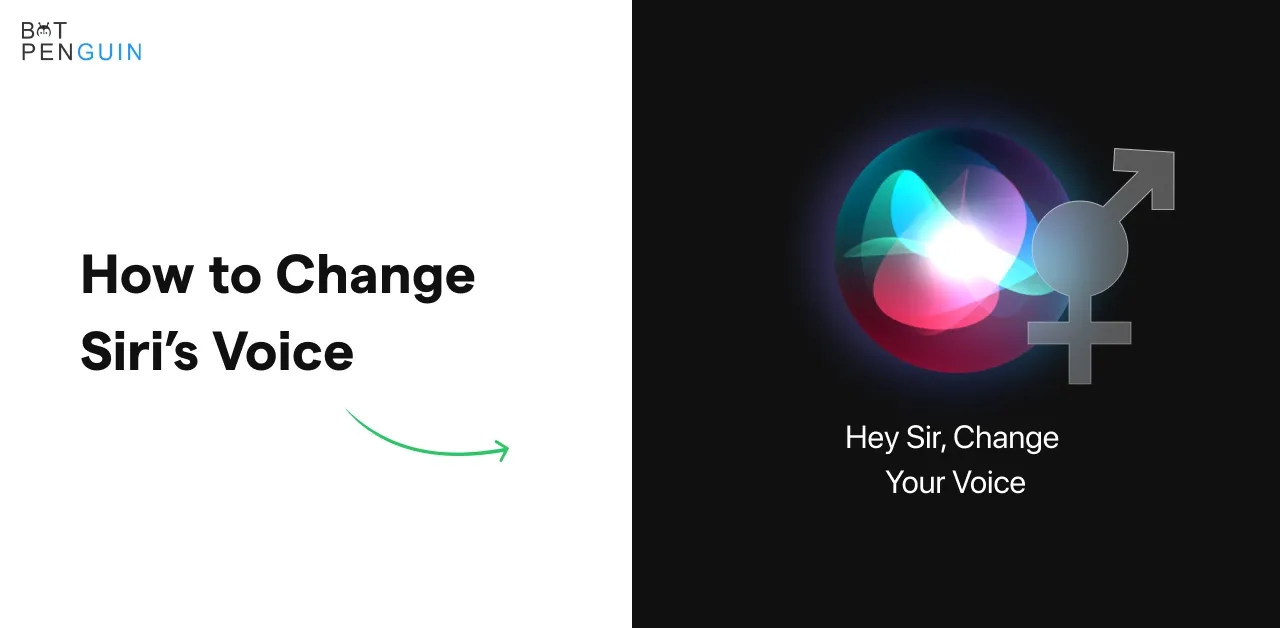Introduction
Are you searching for a surefire way to take your customer service and communication game to the next level?
Well, look no further because we've got just the ticket for you: implement an Interactive Voice Response (IVR) system.
Interactive voice response (IVR) systems are becoming an increasingly popular way for companies to improve customer service and streamline operations. 61% of companies reported using IVR technology in 2018, up from just 51% in 2016 (Global Customer Engagement Report 2018).
With the advancement of speech recognition and AI, IVRs are now smarter and offer more natural conversations than ever before.
In this handy guide, we'll walk you through the ins and outs of IVR system setup, providing you with practical tips and insights that will supercharge your business!
What is an IVR system?
Picture this: you call a customer support helpline and instead of hearing a monotonous voice, a friendly voice greets you and directs you to the right department without any human intervention.
IVR stands for Interactive Voice Response. IVR is an automated phone system that allows customers to interact with a computerized menu through voice or touch-tone commands.
How does an IVR system work?
Behind that enchanting voice lies a robust system. When a customer calls, the IVR system uses speech recognition or DTMF tones to understand their input.
Based on the customer's selection, the IVR system routes the call to the appropriate destination, such as the right department or the next available agent.
It can also provide pre-recorded information or allow customers to perform self-service tasks like checking order status or paying bills.
Set-up Guide: Implementing an IVR System for Your Business
In this section, we’ll explore the set-up guide for implementing an IVR system for your business.
Assessing Your Business Needs
Now that we've laid the foundation, it's time to assess your business needs. In this section, we'll explore the essential steps to determine if an IVR system is right for your business and how to tailor it to your unique requirements.
Identifying the goals and objectives for implementing an IVR system
Before you jump into IVR, ask yourself: what do you hope to achieve? Are you looking to enhance customer satisfaction, reduce call waiting times, or improve call routing efficiency? Understanding your goals and objectives will help you shape your IVR implementation strategy.
Evaluating the specific requirements of your business
Take the time to evaluate your specific requirements. Consider factors like call volume, customer demographics, and the complexity of the inquiries you typically receive. This will guide your decision-making when choosing the right IVR solution.
Determining the scale and complexity of the IVR system needed
Assessing the scale and complexity of the IVR system you need is crucial. Are you a small startup with a handful of agents, or a large enterprise with multiple departments?
Understanding the volume of calls, the level of customization needed, and the need for multi-language support will help you determine the right level of complexity for your IVR system.
Choosing the Right IVR Solution for Your Business
In this step, we'll explore the different types of IVR systems available and the factors to consider when selecting one. Let's get to it!
Different types of IVR systems available
There are also different types of IVR systems to suit various business needs. Here are a few common options:
Traditional IVR Systems
These are the OGs of IVR. They typically use DTMF tones for input and pre-recorded voice prompts for output. Simple, yet effective.
Speech Recognition IVR Systems
Fancy a conversation? Speech recognition IVR systems allow customers to interact with the system using their voice, making the experience more natural and intuitive.
Visual IVR Systems
Who says IVR is limited to audio only? Visual IVR combines the power of traditional IVR with visual menus on a customer's smartphone, making it easier to navigate and access information.
Factors to consider when selecting an IVR solution
Choosing the right IVR solution is like finding your business soulmate:
Scalability and Flexibility
Like a superhero suit, your IVR system should grow with your business. Ensure the solution you choose can handle your current call volume and has the flexibility to accommodate future expansion and customization.
Integration Capability
To conquer challenges efficiently, your IVR system needs to play nicely with your existing tools. Look for a solution that seamlessly integrates with your CRM, databases, and other business systems to enhance customer experience and streamline operations.
Customization Options
Your business has its own personality, so your IVR system should reflect that. Ensure the chosen solution offers customization options for greetings, menu prompts, and call routing to align with your brand and customer expectations.
Reporting and Analytics
To track and measure success, you need insightful data. Look for an IVR solution that provides comprehensive reporting and analytics features, allowing you to identify trends, monitor customer behavior, and continuously improve your customer service.
Planning and Designing Your IVR System
Now that you've found your ideal IVR solution, it's time to put your creative hat on and design a system that wows your customers. In this section, we'll explore the crucial steps involved in planning and designing your IVR system setup.
Mapping out the IVR call flow and menu structure
Think of your IVR system setup as a journey your customers embark on. By carefully mapping out the call flow and menu structure, you can guide your customers smoothly to their desired destination. Consider the different options customers may require, and design a logical flow that minimizes confusion and maximizes efficiency.
Crafting effective and user-friendly IVR scripts
Crafting effective IVR scripts is akin to weaving a spell of customer satisfaction. Use clear and concise language, avoid jargon, and guide customers with easy-to-understand options. Make sure your scripts are customer-centric, focusing on their needs and providing solutions to their inquiries.
Designing personalized and engaging voice prompts
When it comes to voice prompts, let your brand personality shine! Design voice prompts that reflect your brand image - whether that's friendly, professional, or even a little bit playful.
Consider hiring professional voice talents to add that extra touch of polish and engagement. Remember, a delightful voice can turn an ordinary interaction into an extraordinary one!
Implementing and Testing the IVR System
In this section, we'll explore the crucial steps involved in IVR system setup, integrating it with other communication channels, and ensuring its flawless performance through testing and quality assurance.
Setting up the IVR System Infrastructure and Hardware
To build the foundation for your IVR system setup, you need the right infrastructure and hardware. Here's what you need to consider:
Assess Your Existing Infrastructure
Evaluate your current telephony infrastructure to determine if it can support an IVR system. Consider factors like call capacity, network compatibility, and hardware requirements. If upgrades are needed, work with your IT team or a trusted telecommunications provider to ensure a smooth transition.
Choose the Right IVR Platform
Select an IVR platform that aligns with your business needs. Look for features like scalability, integration capabilities, and customization options. Whether you choose a cloud-based or on-premises solution, make sure it fits your budget and future growth plans.
Integrating the IVR System with Other Communication Channels
An efficient IVR system goes beyond just voice interactions. Here's how you can integrate it with other communication channels:
Embrace Multi-Channel Communication
Customers have diverse preferences when it comes to communication channels. Integrate your IVR system with channels like SMS, email, and chat to provide a seamless and personalized customer experience. This allows customers to switch between channels without losing context or getting frustrated.
Connect with Your CRM and Databases
Integrate your IVR system with your Customer Relationship Management (CRM) system and databases. This enables your IVR to access customer information, purchase history, and preferences, allowing for personalized interactions and streamlined processes. Ensure data synchronization and security protocols to protect customer data.
Conducting Thorough Testing and Quality Assurance
To ensure your IVR system performs flawlessly, it's crucial to conduct thorough testing and quality assurance. Here's how you can do it:
Test Your IVR System End-to-End
Test every aspect of your IVR system setup, from call routing and menu options to voice prompts and database integrations. Simulate various scenarios, track call flows, and identify potential bottlenecks or areas for improvement. Engage a diverse group of testers to provide valuable feedback from different perspectives.
Monitor Call Analytics
Track key performance indicators (KPIs) and call analytics to monitor the effectiveness of your IVR system. Keep an eye on call abandonment rates, resolution times, and customer satisfaction scores. These metrics will help you identify areas that need improvement and guide future enhancements.
Continuously Improve and Optimize Your IVR System
The world of customer service is ever-evolving, so your IVR system should be too. Regularly analyze customer feedback, monitor performance metrics, and seek opportunities for optimization. Leverage the power of data to make informed decisions and refine your IVR system to meet customer expectations and business objectives.
Training and Monitoring Your IVR System
Now that your IVR system setup is ready and running, it's time to ensure your team is well-equipped to provide exceptional customer service. Let's explore the key steps involved in training your employees, monitoring IVR performance, and continuously improving your system.
Providing Training for Employees and Call Center Agents
A successful IVR system setup requires a well-trained team. Here's how you can ensure your employees and call center agents are ready to rock:
Conduct Comprehensive Training Programs
Organize training sessions to familiarize employees and agents with the IVR system and its features. Train them on the proper use of the system, call handling procedures, and common customer queries. Build their confidence in handling complex interactions and empower them to provide personalized assistance when needed.
Foster a Culture of Ongoing Learning
Encourage continuous learning and improvement among your employees. Offer refresher courses, provide access to relevant resources, and encourage knowledge-sharing within your team. This will not only enhance their skills but also create a customer-centric culture throughout your organization.
Monitoring and Analyzing IVR System Performance and Metrics
To ensure your IVR system is running smoothly and meeting your business goals, monitoring and analyzing its performance and metrics is essential:
Establish Performance Metrics and Goals
Define key performance indicators (KPIs) that align with your business objectives. Monitor metrics such as call resolution time, caller satisfaction, and system uptime to gauge the effectiveness of your IVR system. Set realistic goals and regularly evaluate your performance against these benchmarks.
Leverage Real-Time Monitoring and Reporting Tools
Invest in real-time monitoring and reporting tools that provide actionable insights into your IVR system. These tools will help you identify potential issues, track customer trends, and make data-driven decisions. Keep a close eye on metrics to quickly address any performance issues and continuously improve your system.
Continuously Improving and Optimizing the IVR System
Optimization is a continuous journey. Here are some best practices to enhance your IVR system's performance over time:
Ensure Seamless Integration with Existing Systems and Databases
Regularly review and update the integrations between your IVR system and other systems or applications. Address any compatibility issues or data inconsistencies that may arise. This will ensure a smooth flow of information and deliver a seamless customer experience across all touchpoints.
Incorporate Self-Service Options and Intelligent Routing
Empower your customers with self-service options to handle simple inquiries and transactions efficiently. Implement intelligent routing algorithms that direct callers to the most appropriate agent or department. By enabling self-service and intelligent routing, you'll reduce wait times, improve customer satisfaction, and free up agents to handle more complex issues.
Optimize the IVR System for Multi-Channel Customer Interactions
In today's interconnected world, customers expect a seamless experience across multiple channels. Optimize your IVR system to handle multi-channel interactions smoothly. Ensure consistent branding, unified customer profiles, and easy transition between channels. This will foster a seamless customer journey, regardless of the channel they choose.
Conclusion
In conclusion, IVR systems offer businesses an effective way to improve customer service and streamline operations.
IVRs excel at handling various types of simple, repetitive tasks to reduce call volume for human agents. The upfront investment can be significant, so ensure you have the budget, staff, and roadmap required.
With the right strategy, an IVR can be a valuable tool for enhancing customer experience and reducing costs.
By automating simple and repetitive phone-based tasks, companies can reduce call volumes to human agents while still providing customers with quick answers or self-service options.
However, an IVR system setup requires careful planning and resources to choose the right system, seamlessly integrate it, and optimize the customer experience.
With smart implementation following best practices, the investment in an IVR system setup can pay dividends through better customer satisfaction and lower costs. Businesses should weigh their needs, capabilities, and customer expectations to determine if an IVR aligns with their goals.
Frequently Asked Questions(FAQS)
How do I choose the right IVR system for my business?
Select an IVR system based on your specific needs, considering factors like call volume, features, integration capabilities, and budget.
What are the essential features to look for in an IVR system?
Key features include call routing, custom greetings, menu options, integration with CRM systems, and reporting tools for performance analysis.
How do I set up and configure an IVR system for my business?
The setup process involves selecting a provider, creating call flows, recording voice prompts, and integrating the IVR with your phone system.
Can I customize the IVR prompts and menus to match my brand's voice?
Yes, most IVR systems allow for customization, enabling you to create a branded and consistent caller experience.



